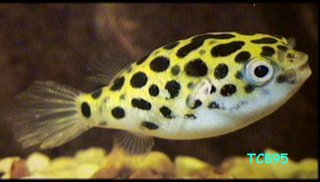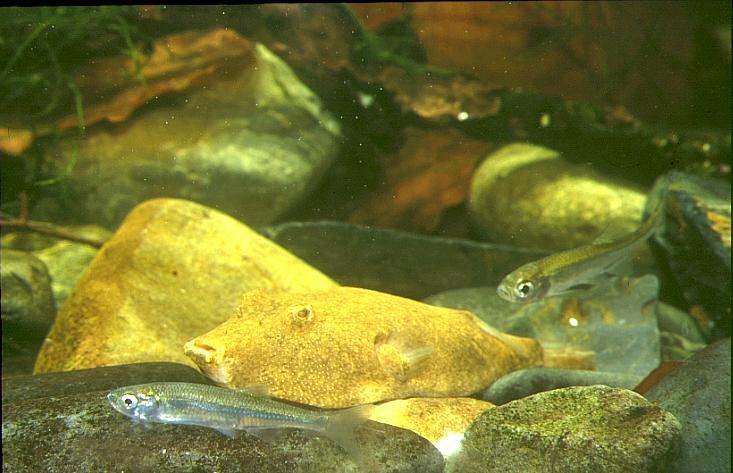  |
  |
 overeating?
Are you wondering if Prozac will damage the buffering capacity of your
tank? The answer to all these questions is--I don't know. I'm
not certain Freud had puffers in mind when developing his "free association"
therapy. The only thing you could possibly look up is the effect
of Prozac on the buffering capacity of your tank. But hold on!
Before you go dosing your fish with anti-depressants, let me concede the
obvious: Yes, the preceding questions are quite ridiculous. Holistic
care for your puffer, however, is not as ludicrous as it sounds.
overeating?
Are you wondering if Prozac will damage the buffering capacity of your
tank? The answer to all these questions is--I don't know. I'm
not certain Freud had puffers in mind when developing his "free association"
therapy. The only thing you could possibly look up is the effect
of Prozac on the buffering capacity of your tank. But hold on!
Before you go dosing your fish with anti-depressants, let me concede the
obvious: Yes, the preceding questions are quite ridiculous. Holistic
care for your puffer, however, is not as ludicrous as it sounds.
 days is obviously not the most relaxing situation. With this in mind,
if your puffer looks good, he's usually feeling good; which translates
into you feeling good. Puffers are among the more unique fish for
your tank, but as you may or may not know, are also some of the harder
fish to keep. This page will cover, in general, both physiological
and mental needs of your puff.
days is obviously not the most relaxing situation. With this in mind,
if your puffer looks good, he's usually feeling good; which translates
into you feeling good. Puffers are among the more unique fish for
your tank, but as you may or may not know, are also some of the harder
fish to keep. This page will cover, in general, both physiological
and mental needs of your puff.



©2001
F. Calalang all rights reserved.